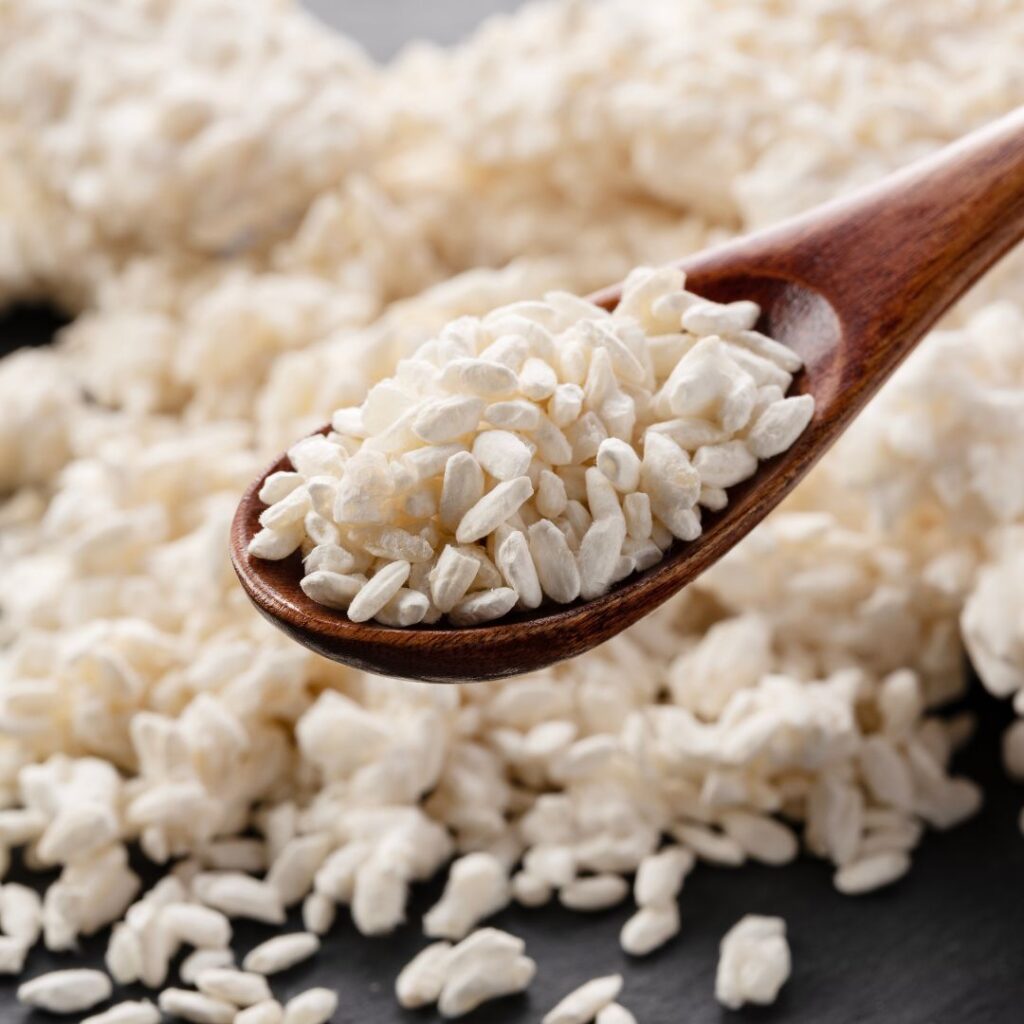Koji kin is a game-changer in traditional Japanese fermentation, allowing the creation of staples like soy sauce, miso, and sake. You’re diving into the world of Aspergillus oryzae, a mold that’s central to this process, transforming starches and proteins into rich flavors. By inoculating steamed grains, a white, fluffy koji is born, setting the stage for an array of fermented goods. It’s not just about flavor; koji kin introduces depth and a coveted umami, alongside health benefits from improved digestion to vitamins. Embracing koji kin in your kitchen opens up a domain of culinary exploration, enriching recipes with history and innovation. Discover how it can transform your cooking next.

The Origins of Koji Kin
Koji kin, an essential ingredient in traditional Japanese fermentation, originated centuries ago, fundamentally shaping the country’s culinary landscape. This isn’t just another component in your kitchen; it’s a transformative agent that’s been handed down through generations, enabling the creation of some of Japan’s most iconic foods like soy sauce, miso, and sake. You’re not simply using an ingredient; you’re wielding a piece of culinary history that empowers you to craft flavors that have been cherished for centuries.
Understanding its origins gives you control over your culinary creations. It’s not just about adding a flavor; it’s about invoking a tradition that has perfected the art of fermentation. You’re tapping into centuries of expertise to elevate your dishes beyond the ordinary. With koji kin, you’re not just cooking; you’re curating a gastronomic experience that bridges the past and present.
This knowledge isn’t just for keeping traditions alive. It’s a tool that allows you to innovate while staying rooted in a rich culinary heritage. You’ve got the power to experiment and create new flavors, all while standing on the shoulders of culinary giants. Koji kin isn’t just an ingredient; it’s your gateway to mastering the art of Japanese fermentation.
Understanding Aspergillus Oryzae
At the heart of koji kin’s transformative power lies Aspergillus oryzae, a mold that’s been harnessed for centuries to ferment a variety of Japanese staples. This microbe isn’t just any mold; it’s a workhorse in the world of fermentation, breaking down starches and proteins into simpler, more flavorful compounds. If you’re aiming to take charge of your culinary experiments or enhance your food production methods, understanding A. oryzae is essential.
To get started, you’ll need to know how to cultivate this mold under controlled conditions. It thrives in warm, moist environments, making rice an ideal substrate. By managing temperature and humidity, you can optimize A. oryzae’s growth, ensuring a high-quality koji kin. This process isn’t just about letting nature take its course; it’s about guiding fermentation to achieve desired outcomes.
Mastering the cultivation of A. oryzae offers you the ability to influence flavor profiles, nutritional content, and even the texture of your foods. As you explore further into the world of koji, remember that your approach will shape the character of your ferments. This mold isn’t just a tool for fermentation; it’s a partner in your culinary creations.
The Role in Japanese Cuisine
Understanding the cultivation of Aspergillus oryzae, you’re now well-equipped to appreciate its pivotal role in shaping Japanese cuisine. This mold, central to your culinary arsenal, transforms simple ingredients into staples like soy sauce, miso, and sake. These aren’t just condiments or beverages but the soul of Japanese cooking, offering depth and umami that’s hard to replicate with any other method.
You wield koji kin like an artist uses paint, each stroke contributing to the flavor profile of your dish. Soy sauce, crafted through koji’s fermentation magic, becomes an essential element in your marinades and dipping sauces, adding layers of complexity. Miso, another koji creation, offers a range of flavors from sweet to salty, enhancing your soups, marinades, and glazes. And sake, with its delicate balance, brings a unique character to your cooking, whether used in sauces or as a drinking accompaniment.
In your hands, koji kin is more than a fungus; it’s a tool for culinary innovation. By mastering its application, you’re not just cooking; you’re connecting with centuries of tradition, elevating your dishes with the essence of Japanese cuisine.

Fermentation Process Explained
To truly harness the potential of koji kin in your culinary creations, understanding how the fermentation process works is essential. Koji kin, a mold spore, initiates fermentation by breaking down the starches in grains into simpler sugars. This transformation is the heart of the process, enabling the creation of a variety of Japanese foods and beverages.
You’ll start by mixing the koji kin with steamed rice, barley, or soybeans under specific humidity and temperature conditions. It’s a delicate balance; too hot and the mold won’t survive, too cold and it won’t activate. You’re aiming for a warm, moist environment where koji kin thrives, usually around 30°C (86°F) for about 48 hours.
During this time, koji kin works its magic, fermenting the substrate and producing enzymes. These enzymes are the key players, converting the complex carbohydrates into simpler sugars. It’s a meticulous process, requiring your attention to make sure ideal conditions are maintained throughout.
Impact on Flavor and Umami
Koji kin’s transformative power greatly enhances the flavor profile and umami of your dishes, making them irresistibly savory. This remarkable mold isn’t just a catalyst for fermentation; it’s your secret weapon in the kitchen to reveal depths of flavor you’ve only dreamed of. By incorporating koji kin into your culinary practices, you’re not merely cooking; you’re orchestrating a symphony of tastes that command attention.
You see, as koji kin breaks down proteins into amino acids during fermentation, it releases glutamate, the very essence of umami. This doesn’t just add a savory depth; it rounds out flavors, balances out sweetness and saltiness, and eliminates the need for artificial enhancers. You’re in control, creating dishes that aren’t only healthier but packed with complex, layered flavors that are naturally occurring.
Imagine taking a simple piece of meat or a humble bowl of rice to new heights, transforming them into dishes that resonate with the richness and savoriness usually reserved for professional kitchens. That’s the power you wield with koji kin. It’s not just cooking; it’s elevating every bite with nature’s own flavor enhancer, giving you the ultimate control over the taste and quality of your food.
Health Benefits
Beyond enhancing flavors, koji kin also offers numerous health benefits that can elevate your well-being. This remarkable fungus works its way into your diet, not just as a flavor enhancer but as a powerhouse of nutrition.
It’s rich in enzymes that aid in digestion, helping you break down food more efficiently and absorb nutrients better. You’ll find that incorporating koji kin into your meals can lead to improved gut health, which is vital for overall body function.
Moreover, koji kin is a source of essential vitamins and minerals, contributing to a balanced diet. Its fermentation process produces bioactive compounds that support your immune system, making you less susceptible to common illnesses. This means you’re not just enjoying delicious food; you’re also building a stronger defense against health challenges.
Culinary Applications
While exploring the rich landscape of culinary arts, you’ll discover that koji kin transforms ordinary ingredients into umami-packed masterpieces. This traditional Japanese mold, pivotal in fermenting soybeans for soy sauce and miso, also works its magic on meats, bringing out deep, savory flavors you can’t achieve through seasoning alone.
You can start by inoculating rice with koji kin to create your base. This isn’t just for making miso or sake; you’re looking at the foundation for marinades that tenderize and enhance meat, fish, and even vegetables. Imagine a steak, marinated in koji, that’s not just tender but has a flavor depth rivaling that of a high-end restaurant dish. You control the intensity by adjusting the marinating time.
Moreover, experimenting with koji kin in your kitchen gives you the power to produce artisanal soy sauces and unique pickles, elevating your dishes with flavors you can’t find off the shelf. It’s about taking control of your culinary creations, infusing them with complexity and a gourmet edge. Embrace koji kin, and you’ll access a world where you’re not just cooking; you’re crafting experiences.
Conclusion
You’ve now journeyed through the fascinating world of koji kin, from its ancient origins to its pivotal role in Japanese cuisine and beyond.
You’ve seen how Aspergillus oryzae, the mold behind the magic, transforms simple ingredients into complex flavors, enhancing umami and offering health benefits.
Whether it’s miso, sake, or soy sauce, koji kin’s influence is undeniable.
So, next time you enjoy these fermented delights, remember the microscopic marvel that makes it all possible.
Embrace the art of fermentation and explore koji kin’s culinary potential in your own kitchen.








Konnichiwa! (Hello!) I'm Pat Tokuyama, a Japanese tofu cookbook author, who travels for music, food, and adventure. If you like Japanese tea, checkout some of the newestorganic japanese tea, matcha bowls and noren and more!
** Curious about the Plant Based Japanese Cooking Club? ** Learn more here!